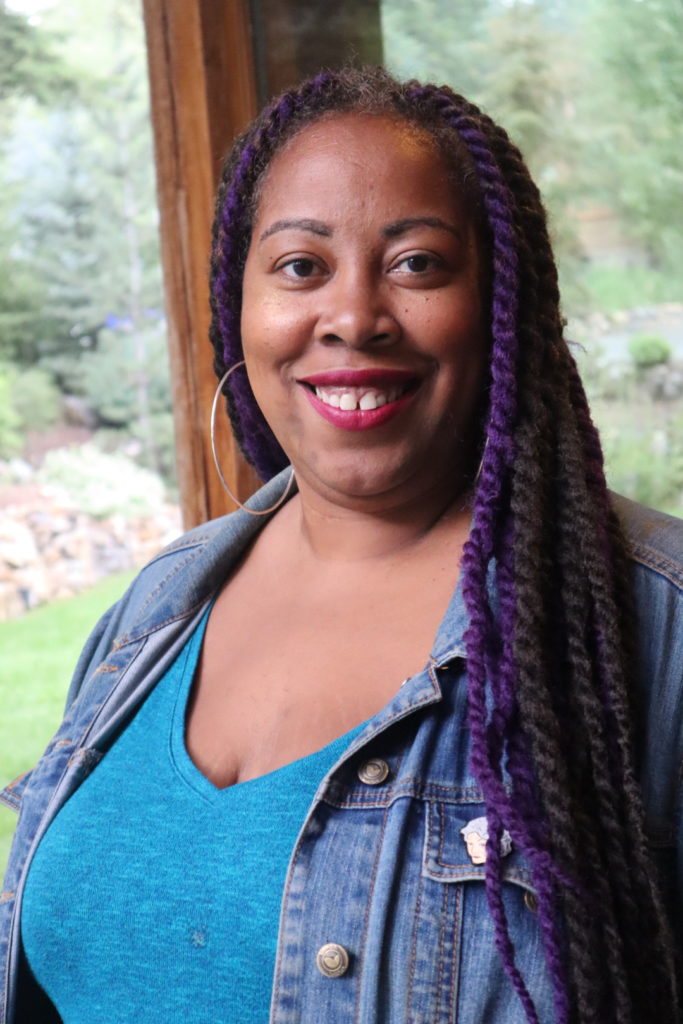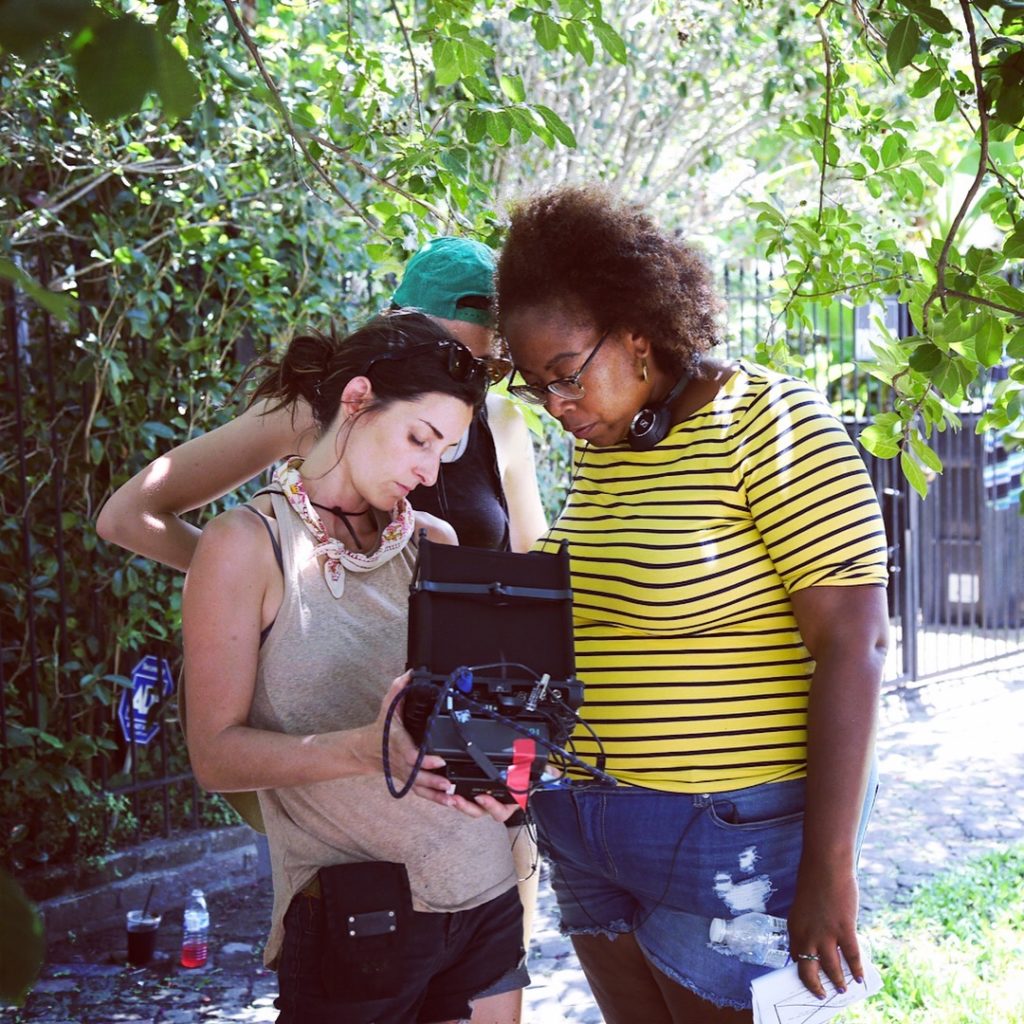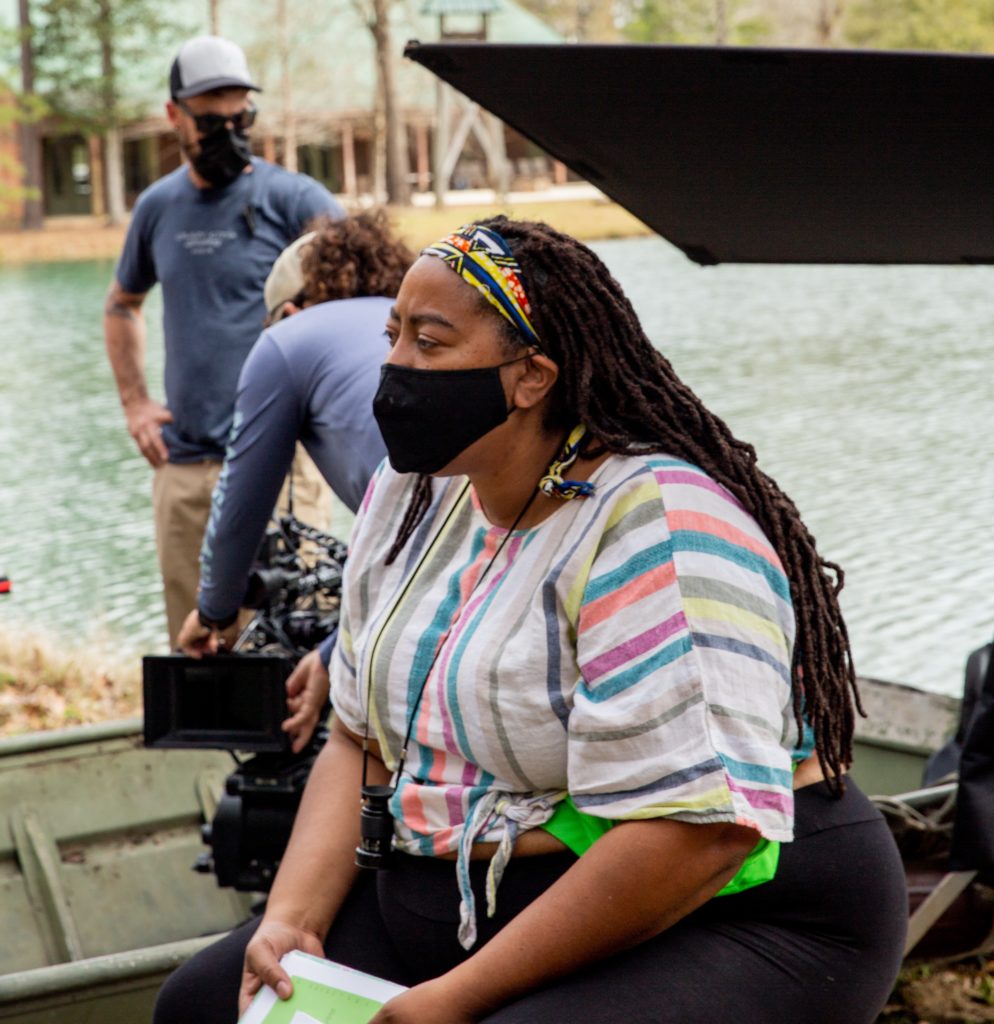Filmmaker Angela Tucker spotlights Black joy
February 1st, 2023 | Africa, SIT Study Abroad
'My work is about representing underrepresented communities in unconventional ways'

Photos courtesy of Angela Tucker.
For filmmaker Angela Tucker, an SIT Study Abroad arts and culture semester in Ghana in the ’90s proved pivotal. It was there, she says, that she first got behind the camera.
“It was a formative time in life,” she says. As a theater and African-American Studies major at Wesleyan, she found Ghanaian ideas about where art and culture reside different in some interesting ways. “In America, you go to a play or watch a film and that’s what art is, where art is. That’s a very western idea. But someplace like Ghana—art and culture is everywhere.”
Angela says her SIT program was focused on the idea of going somewhere in the country, having an experience, then writing about it. “We did something with the national theater in Accra—a performance art thing. The actors would go into areas where women were selling skin-bleaching cream, and they’d provoke a conversation about bleaching.”
It’s about Black joy—and that’s radical in a world that wants to show Black pain.
When the students went to observe, Angela ended up with the job of filming. “I had never done anything like that! It was my introduction to filming something.” Angela went from Wesleyan to Columbia, where she received an MFA in Film. The native New Yorker now resides in New Orleans.

These days, as an Emmy and Webby award-winner, it’s pretty easy to find Angela's work. Christmas 2022 saw the debut of her first Lifetime Christmas movie, A New Orleans Noel. And she’s done many documentaries, including All Skinfolk, Ain’t Kinfolk on PBS’ Reel South; Black Folk Don’t, an intriguing web series of shorts including interviews about perceptions of what is and isn’t “Black”; and (A)sexual, a look at people for whom sexual attraction is not a part of life.
No matter the format or length, Angela says there’s a common thread running through everything she does: “My work is about representing underrepresented communities in unconventional ways. I think my Christmas movie had a place in my work as much as a documentary about forced sterilization. It’s about representation, and the importance of showing the experiences of Black people.”
She puts a finer point on it, too. “It’s about Black joy—and that’s radical in a world that wants to show Black pain.”
Black Folk Don't is a good example of how that difference manifests in her work. The series is often funny, and consistently insightful. In it she examines, primarily through interviews, things that are often considered outside the usual Black cultural parameters, like, for instance, yoga.
From that premise, Angela says, “I just thought, ‘How do you make something that explores stereotypes?’ So many are problematic, and some are based in truth.”
Many filmmakers reside primarily in the world of narrative feature or the world of documentaries. Angela has explored both and finds each rewarding in its own way. “What I love about doing a documentary is that you can keep moving it along yourself; you don't need a big entity to give you money. Life-wise, that’s really nice, to have a lot of control over what you’re doing. But with documentaries, you also have to give over to whatever happens.”
With narrative films, she says, there’s a different kind of control. “There’s a lot of time that goes into writing and planning, and then the experience of making it is actually a very short experience.” That kind of shorter experience, she says, has been “lighter. It’s given me the strength and stamina to do the other work.”

When you spend time with her work, you may notice a through-line of an aesthetic sort, too. There’s a somewhat similar look throughout. And that, of course, is intentional. “The lighting of brown skin—making brown skin look beautiful—it’s often about finding a crew and a team that knows how to do that.
“I also think about color palette a lot. I can't always control that, though. I think going to film school for fiction was probably good, in that I didn’t come at documentary from the perspective of being a journalist. I came to it from having to understand look and feel and the aesthetic piece first. That’s always on my mind.”
The recent arrival of New Orleans Noel may well help Angela reach more people and realize more opportunities in all the varieties of work she pursues. The chance to make a film for Lifetime, she says, came about through a New Orleans-based producer who’d pitched a Christmas movie. Lifetime, she explains, wanted a Black writer and director, preferably based in Louisiana.
The lighting of brown skin—making brown skin look beautiful—it’s often about finding a crew and a team that knows how to do that.
The filming took longer because of the pandemic, but finally wrapped for a Christmas 2022 release. The experience was different in some highly specific ways, Angela says. “There’s a whole way of doing things. Lifetime—they have their own rules and trends. This year, for instance, there are a lot of movies about architects. But this film was always primarily a vehicle for Keisha Knight Pulliam.” And, it bears noting, New Orleans Noel also attracted a big name in singer Patti Labelle.
From here, this SIT alum hopes to open new doors and explore some intriguing new projects. “I’m working on a feature documentary about [trailblazing Texas congresswoman] Barbara Jordan. And another about holistic ways for women to take care of their bodies. And I’m working on something about an older love affair.” It’s all a through-line that stretches back to picking up a camera to film the arts and culture of Ghana with SIT.
